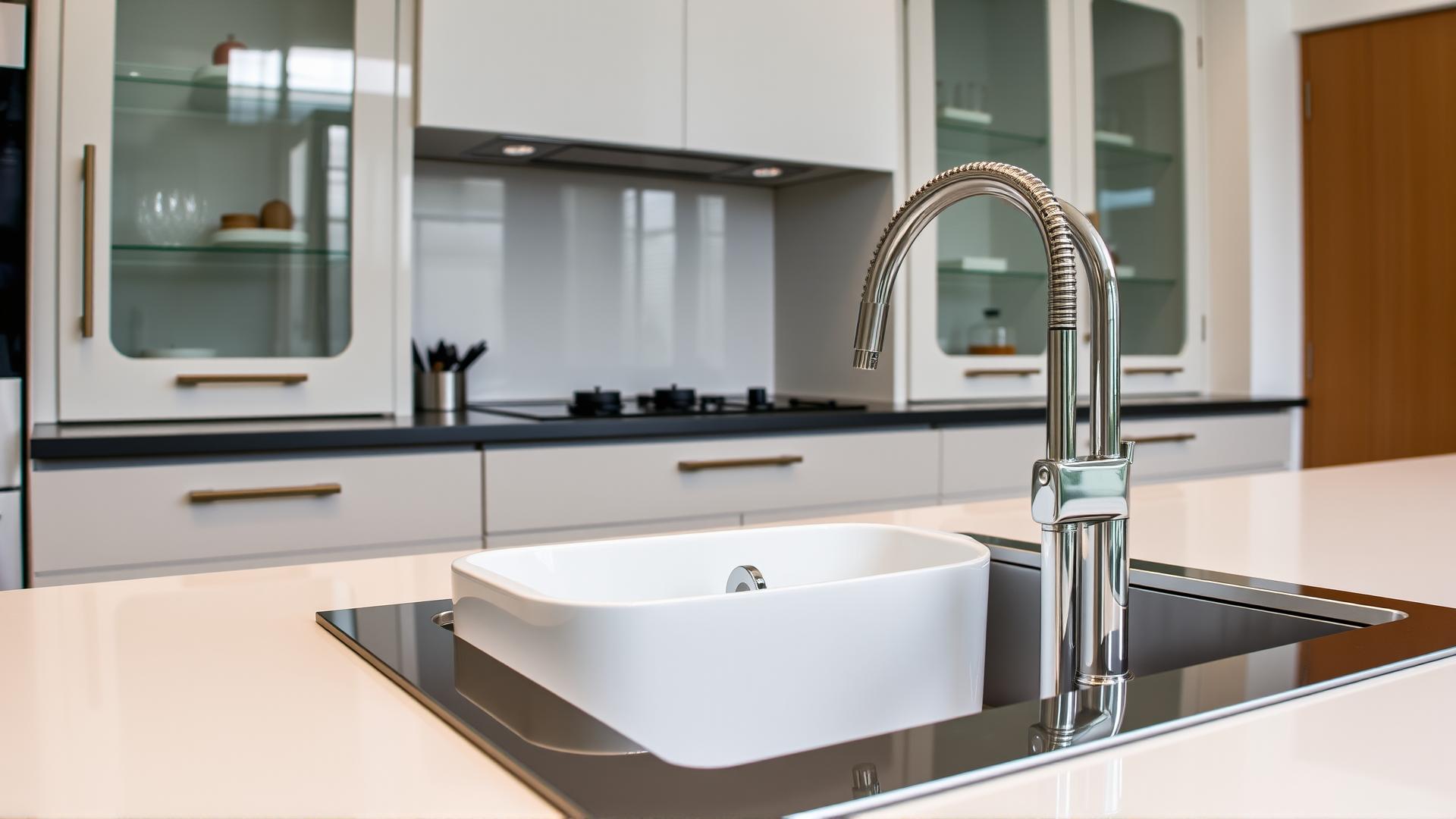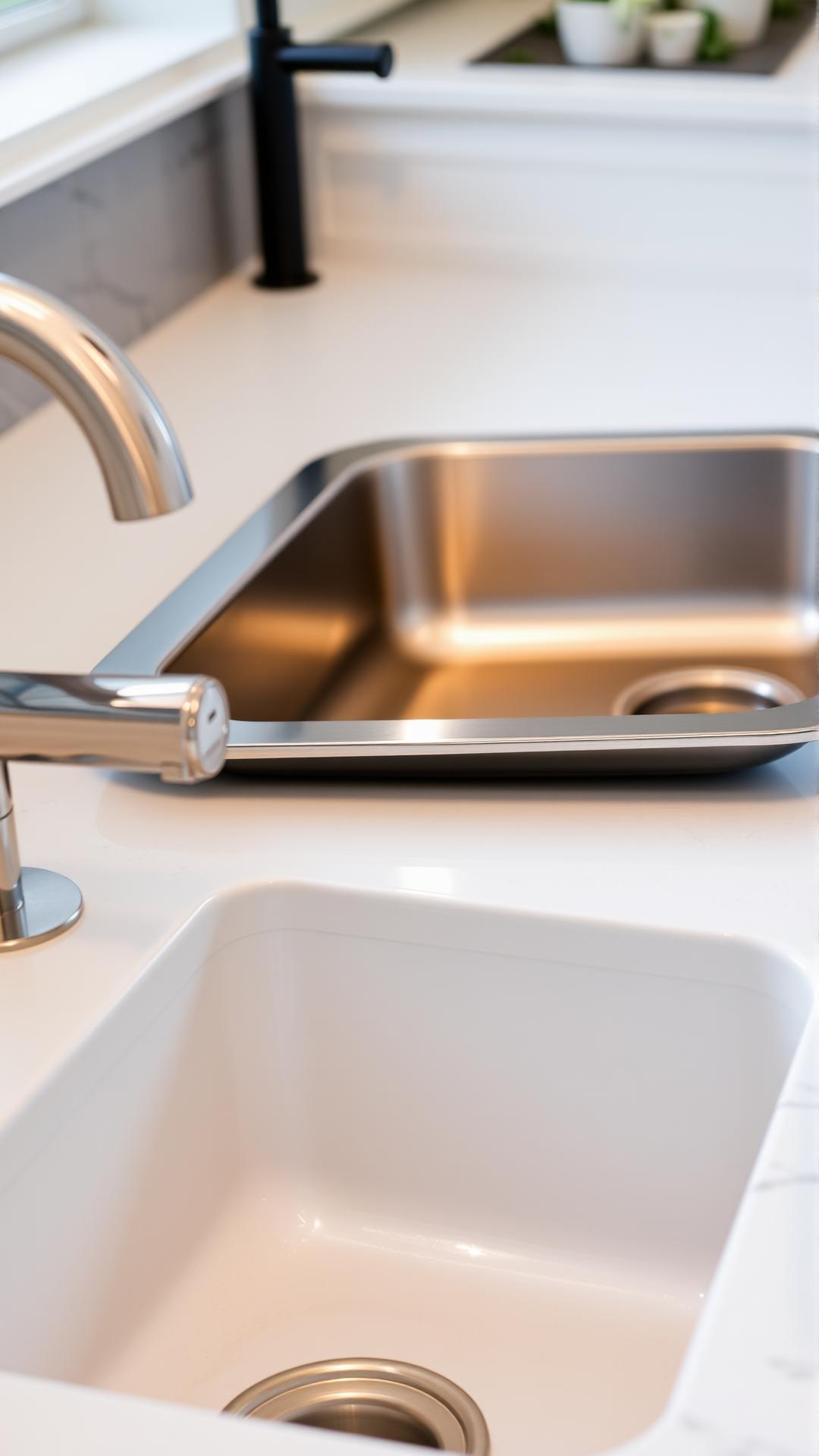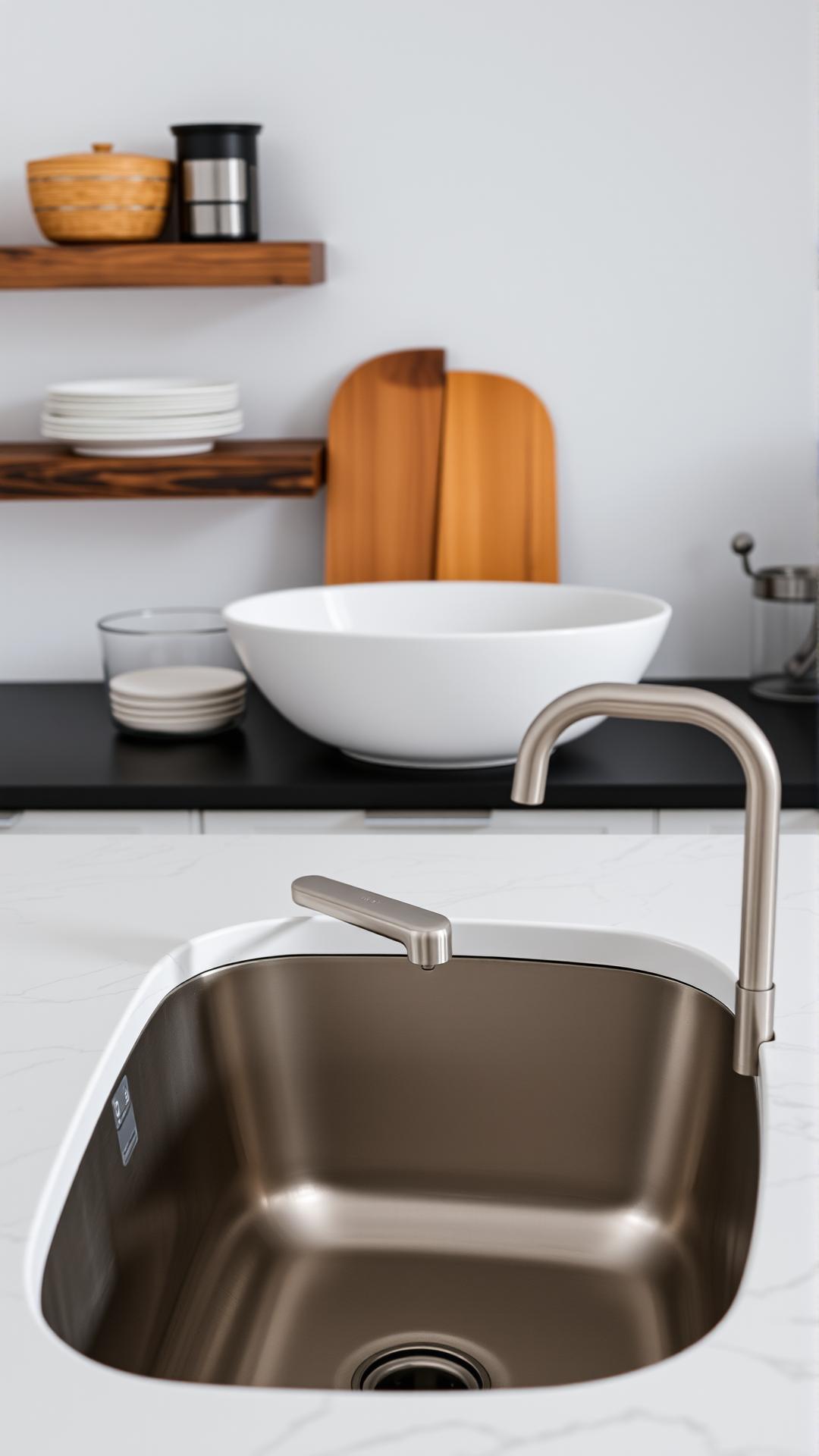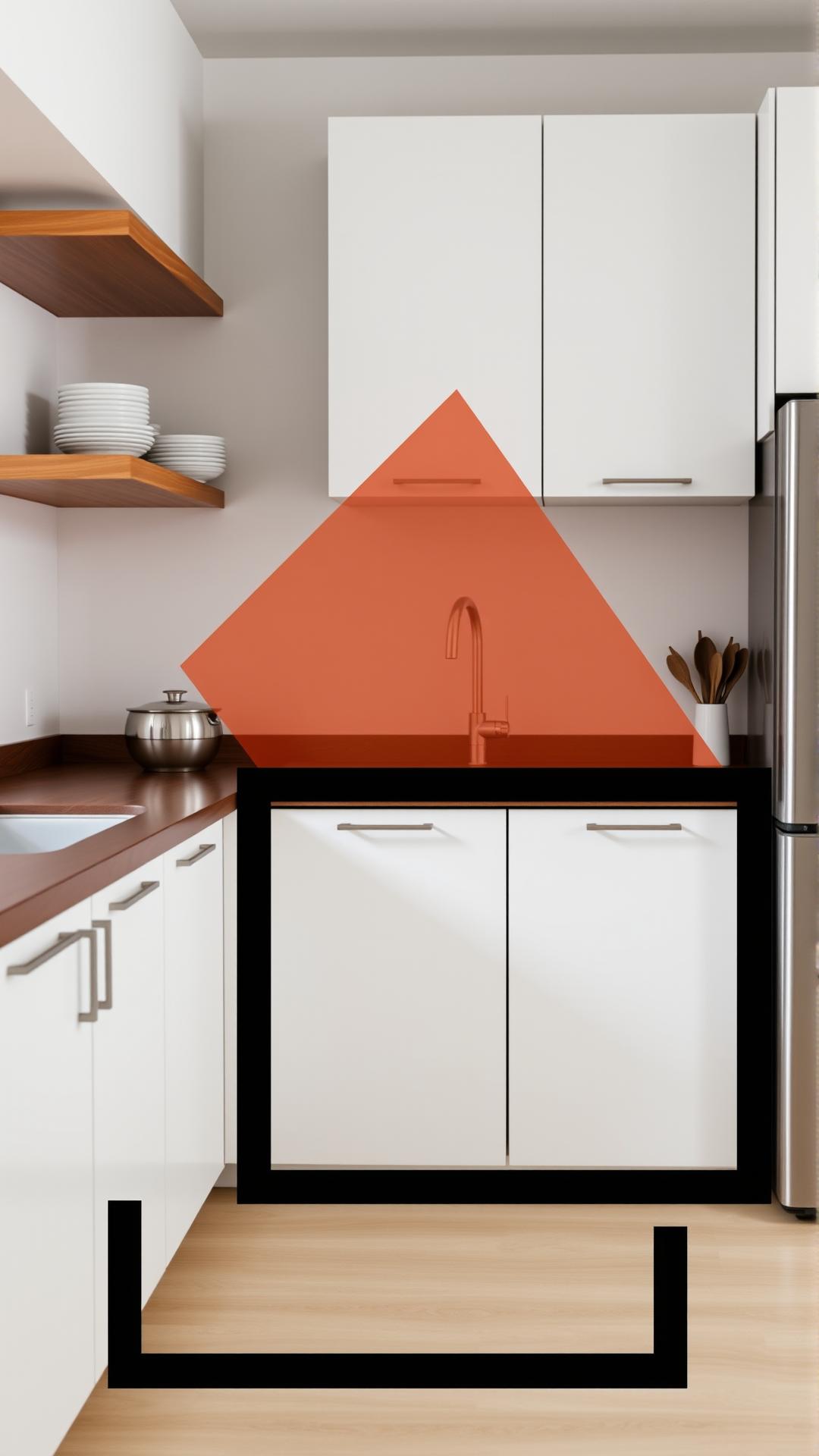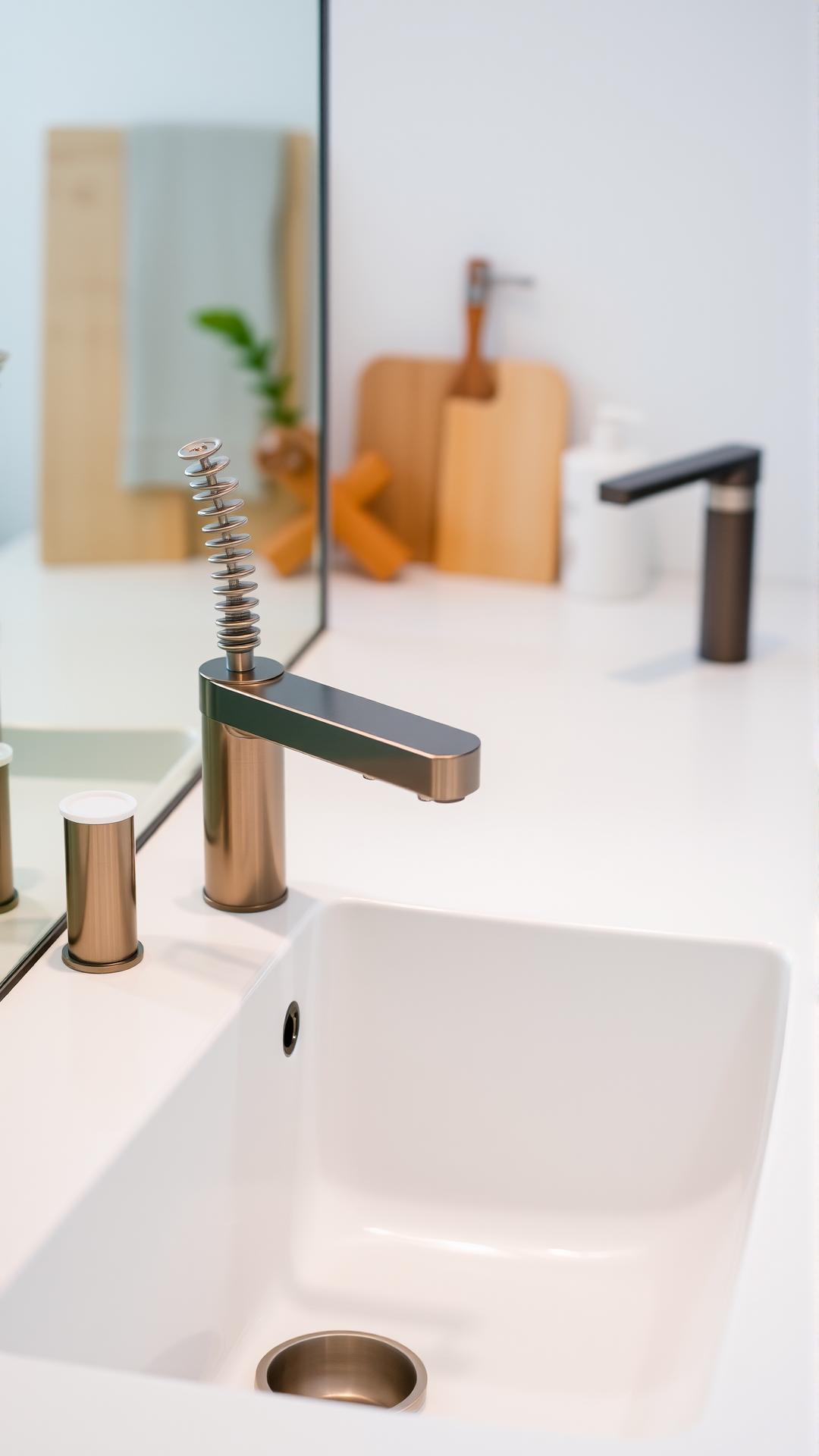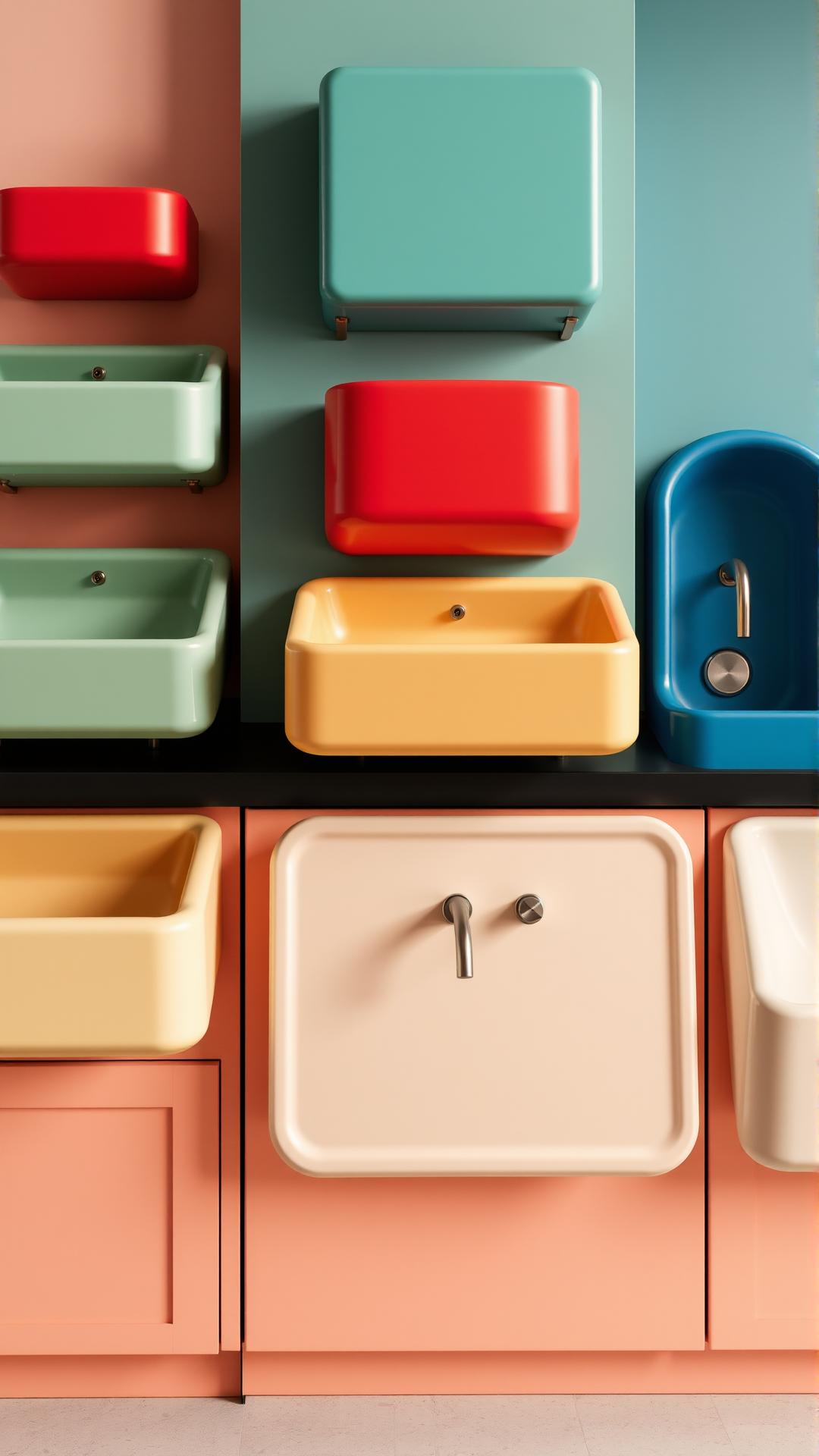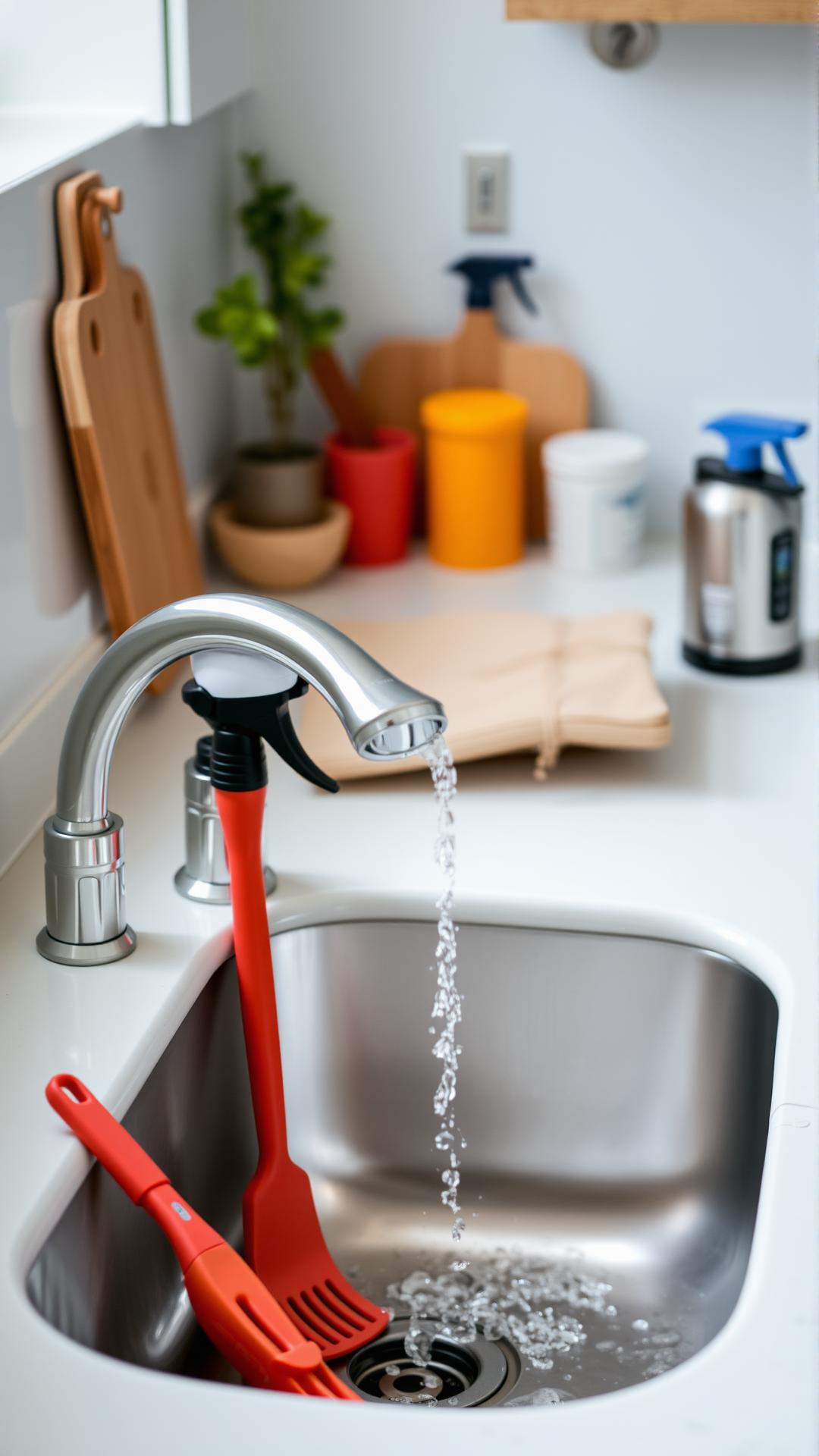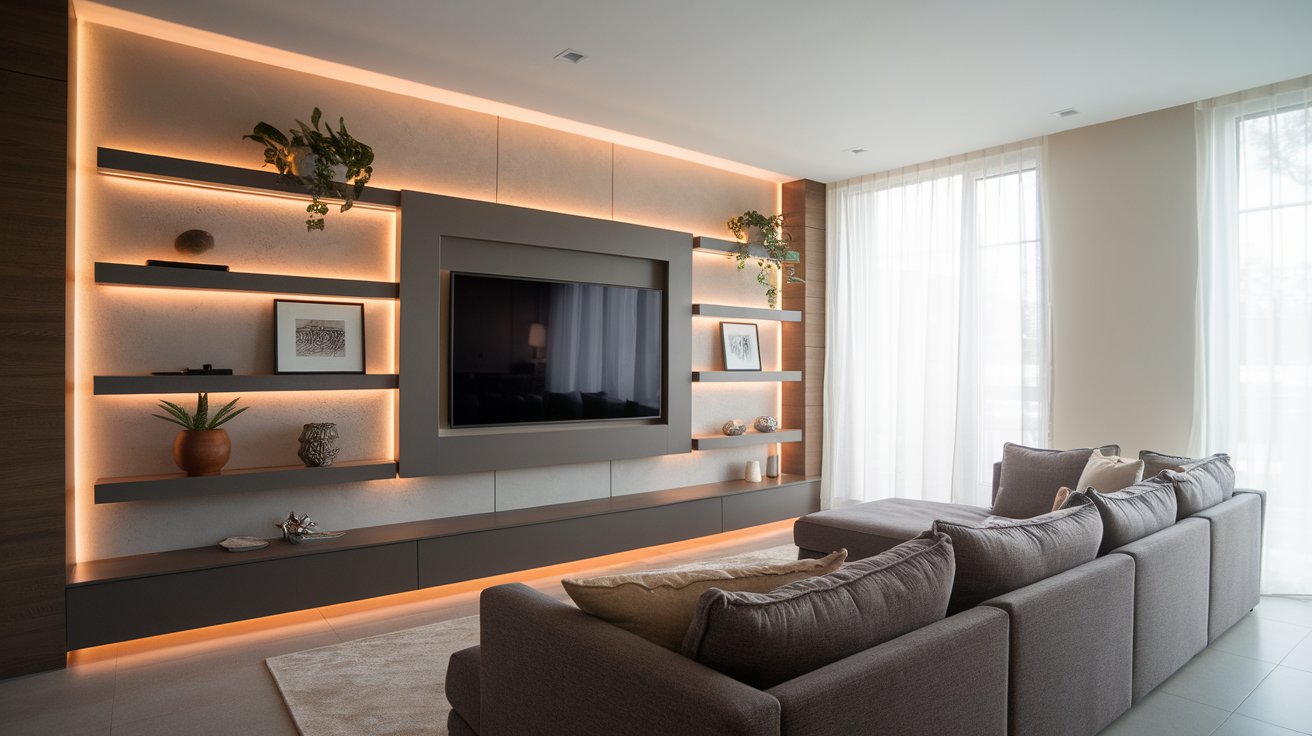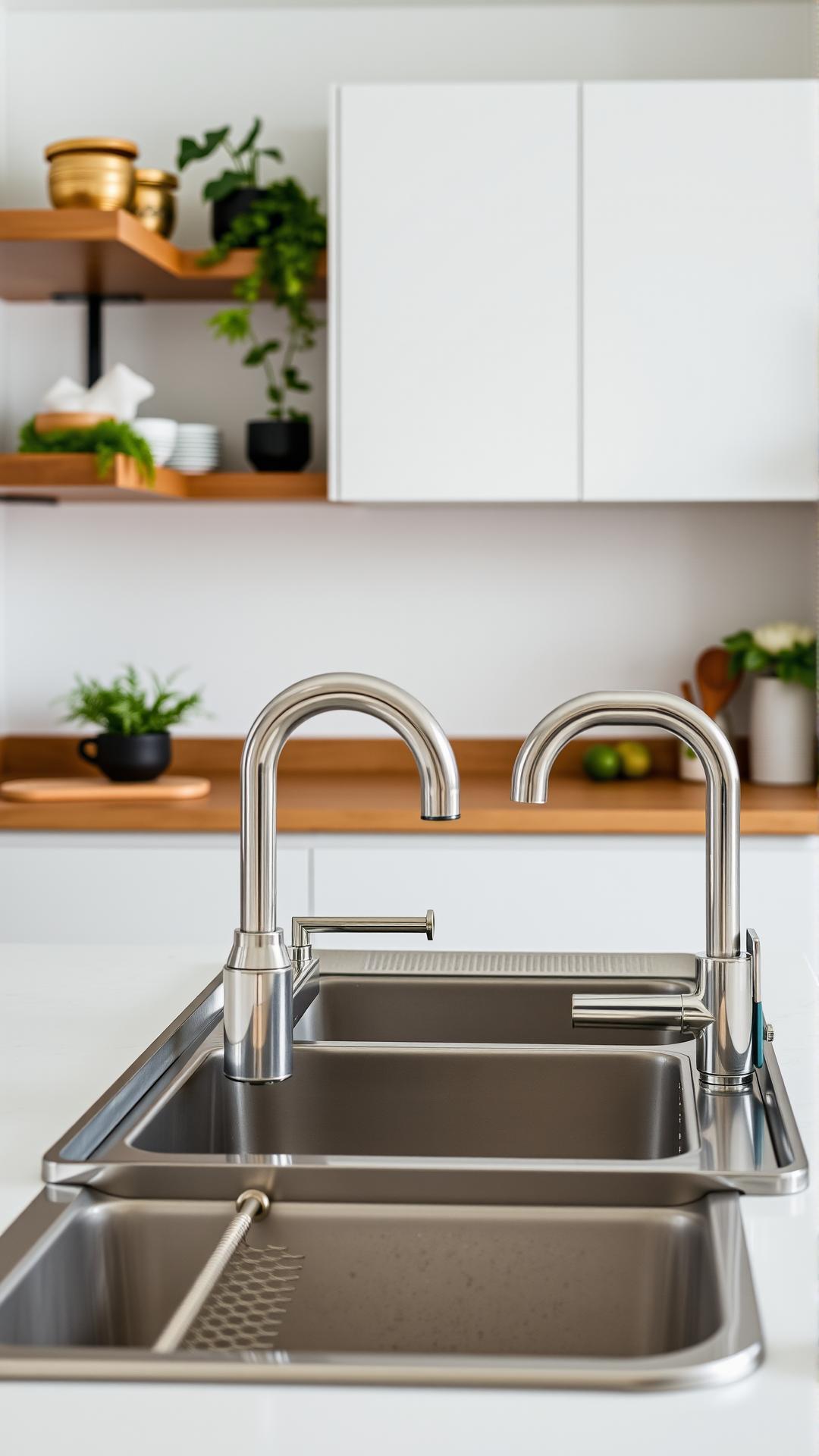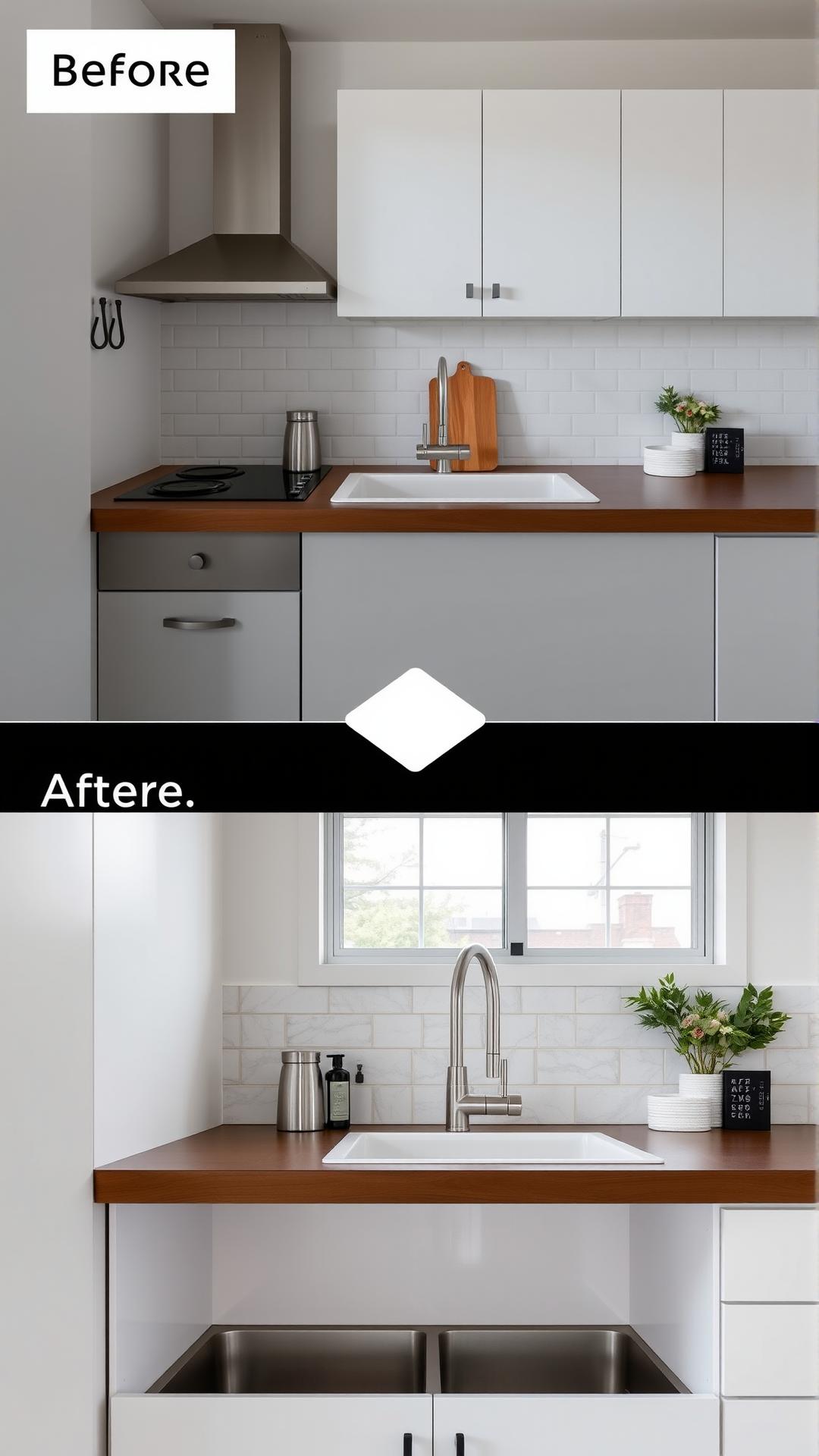Introduction
The kitchen is often regarded as the heart of the home, where culinary creativity and family gatherings come to life. Central to this beloved space is the kitchen sink, an essential fixture that not only serves functional purposes but also sets the tone for the kitchen’s aesthetic. In modern design, the right sink can enhance workflows while harmonizing with overall decor themes. This article will looks deep into a variety of sinks kitchen ideas, highlighting innovative designs that cater to style and functionality.
Exploring different materials, sizes, and placements, we will uncover how contemporary sinks can elevate the cooking experience. From undermount to farmhouse sinks, each option presents unique benefits that cater to diverse household needs. Whether you’re renovating or just seeking inspiration, understanding the multitude of sink choices will empower you to create a culinary space that is both practical and visually appealing.
Choosing the Right Material for Your Sink: A Guide to Modern Kitchen Durability and Aesthetics
Exploring Material Options for Kitchen Sinks
When selecting a sink for your modern culinary space, the material plays a crucial role in determining not only its longevity but also its visual impact. Each material presents distinctive qualities that cater to various design preferences and functional needs.
Stainless steel remains a favorite among homeowners and chefs alike. Renowned for its high durability, it resists rust, stains, and heat, making it ideal for busy kitchens. With a sleek and contemporary appearance, stainless steel seamlessly blends with different surfaces or fixtures. Regular maintenance consists of simple cleaning with mild soap and water, ensuring its shine is retained. However, it’s important to note that it can be prone to scratches, which may require occasional polishing to keep it looking pristine.
Porcelain sinks, often associated with traditional designs, offer a charming aesthetic suitable for both classic and contemporary kitchens. Their glossy finish provides a smooth surface that is easy to clean while also being resistant to heat and stains. However, their vulnerability to chips and cracks means that careful handling is essential, particularly in a bustling kitchen environment. Their elegant look can elevate the overall decor but requires more attention to maintain their pristine condition.
Composite sinks are an innovative alternative that merges materials such as acrylic resins and stone particles. This combination results in a durable and versatile sink that can mimic the appearance of natural stone without the associated weight or maintenance issues. The surface is generally resistant to scratches and stains, and features a wide array of color and texture options that can enhance a modern kitchen’s design. One drawback is that they might be less heat-resistant than stainless steel, necessitating caution with hot pots and pans.
Choosing the right sink material boils down to personal lifestyle and the kitchen’s aesthetic. A stainless steel option may appeal to the pragmatist, while porcelain may call to those who appreciate classic beauty. Meanwhile, composite materials offer a harmonious balance of modern design and functionality. By evaluating the durability, maintenance, and aesthetic qualities of each, readers can make informed decisions that suit their culinary space.
Popular Sink Styles for Modern Kitchens: Exploring Undermount, Farmhouse, and Vessel Sinks
Understanding Sink Styles in a Contemporary Space
The kitchen sink is much more than a utility fixture; it serves as a focal point in modern culinary spaces. Among the popular styles, undermount, farmhouse, and vessel sinks each bring their distinctive appeal and functionality, enhancing both the aesthetic and practical dimensions of a kitchen.
Undermount sinks are a popular choice for contemporary kitchens due to their sleek design that creates a seamless look when installed beneath the countertop. This style of sink allows for easy cleanup, as debris can be wiped directly into the sink without any ledge to catch crumbs or spills. With various materials and finishes available, undermount sinks can fit seamlessly into a range of design themes, from minimalist to industrial. Their understated elegance complements modern cabinetry and countertops, giving the kitchen a clean and uncluttered appearance.
Farmhouse sinks, also known as apron-front sinks, offer a charming rustic aesthetic that has made them increasingly popular in modern settings. This type of sink protrudes slightly from the cabinetry, providing a unique visual element reminiscent of traditional farmhouses. Beyond their looks, farmhouse sinks are often deeper than conventional options, making them ideal for washing large pots and pans. Available in materials like fireclay, stainless steel, and even composite, these sinks merge functionality with style, creating a welcoming atmosphere in the kitchen.
Vessel sinks present another dynamic option, adding a bold statement to any culinary space. Positioned above the countertop, these sinks come in various shapes, colors, and materials, allowing for a high degree of customization. While often seen in bathrooms, their usage in kitchens is increasingly trendy, especially in modern or eclectic designs. The elevation of a vessel sink creates a unique sculptural element that can serve as a conversation starter in your culinary space. However, it’s worth noting that they may require more maintenance than other styles, as the exposed areas can accumulate dirt and grime more readily.
Comparing Functional Benefits
When considering which sink style to choose, it is important to weigh not only their design attributes but also their functional benefits. Undermount sinks excel in ease of use and cleanliness, while farmhouse sinks are perfect for those needing ample space for dish-washing. On the other hand, vessel sinks can make an artistic statement, but take consideration of their maintenance requirements. Ultimately, selecting the right sink can play a pivotal role in the overall coherence of your modern kitchen design.
Optimal Sink Placement for Your Workflow: Navigating Kitchen Layout Principles
The placement of the sink within a kitchen is pivotal, influencing not only aesthetics but also the overall functionality of the space. A well-thought-out sink location can transform a kitchen into a seamless environment, enhancing the efficiency of daily cooking tasks. Understanding the principles of the kitchen work triangle—comprising the sink, stove, and refrigerator—is fundamental to achieving an optimal workflow.
Understanding the Kitchen Work Triangle
The kitchen work triangle is a design principle that emphasizes the importance of placing the sink, stove, and refrigerator within a triangular layout. Each leg of the triangle should ideally be between 4 to 9 feet to ensure easy movement between these key areas. A well-balanced design minimizes unnecessary steps while maximizing productivity and ease of access. Placing the sink at a central position within this triangle allows the cook to switch effortlessly between washing, chopping, and cooking, thus saving valuable time during meal preparation.
Positioning for Efficiency and Accessibility
While the ideal position for the sink often depends on the size and layout of the kitchen, certain principles hold true. For instance, placing the sink adjacent to the stove allows for a quick transition from washing vegetables to cooking. If the layout permits, consider positioning the sink in a way that it faces the main cooking and prep areas. This visibility not only fosters communication but also streamlines the workflow, especially if multiple cooks are present. Furthermore, having the sink near the refrigerator can expedite the process of transferring items for washing and cooking.
The height of the sink is another consideration. Ideally, it should accommodate the user’s height to prevent strain and enhance comfort during meal prep and cleanup. Deep sinks can minimize splashing while providing ample space for large pots and pans, and they can be placed lower to the counter for a more ergonomic experience.
Incorporating a well-placed sink transforms the modern culinary space, tying together style and functionality. Its strategic location can significantly influence the cooking experience, allowing for a fluid and echoing rhythm in food preparation. Ultimately, the careful arrangement of the sink within the kitchen layout not only optimizes workflow but also celebrates the art of cooking in a thoughtfully designed modern kitchen.
Innovative Sink Accessories for Enhanced Functionality
Maximizing Usability with Practical Additions
In the mission to create a modern culinary space, sink accessories play a pivotal role in enhancing the functionality of your kitchen. By integrating various tools into your sink area, you can streamline daily tasks, making the cooking and cleaning processes more efficient and enjoyable.
One of the most popular accessories is a built-in cutting board. This addition allows for easy food preparation right over the sink. By providing a stable and convenient surface for chopping fruits and vegetables, it reduces the amount of time spent transferring ingredients between different surfaces. Most cutting boards designed for sink use are adjustable and can fit over different sink sizes, ensuring versatility in your kitchen layout.
Another essential accessory is the drying rack. These racks can be seamlessly integrated with the sink or placed adjacent to it. They provide a designated space for drying dishes, fruits, or herbs after washing. Many modern designs are collapsible or can be adjusted based on your available space, making them perfect for small kitchens. By keeping your countertops free from clutter, a drying rack fosters a cleaner and more organized workspace.
Strainers are also invaluable for enhancing usability. Built into some sink designs or available as separate attachments, they facilitate draining excess water from washed produce or help in rinsing pasta without creating a mess. Strainers come in various materials and designs, including silicone and stainless steel, which can complement your overall kitchen aesthetic while serving a practical purpose.
Sink caddies can simplify organization by providing a designated area for sponges, brushes, and soaps. These caddies prevent clutter and keep essentials within arm’s reach, ensuring that everything needed for cleaning is easily accessible. They come in various styles and materials, allowing you to choose an option that aligns with your kitchen’s design while promoting a more orderly environment.
Consider incorporating a pull-out faucet or a spray nozzle attachment. These features enhance your ability to rinse dishes, clean the sink, or fill pots with water, maximizing functionality without compromising on style. As kitchen design trends continue to evolve, integrating these innovative sink accessories elevates both practicality and aesthetic appeal in your culinary space.
Color and Finish Trends for Kitchen Sinks: Transforming Your Space with Vibrant Options
In the quest for a modern culinary space, the choice of sink color and finish can significantly influence the kitchen’s overall atmosphere. Contemporary design has seen a shift towards diverse color palettes that go beyond the standard stainless steel and white porcelain, allowing homeowners to express their individuality through dynamic choices.
Bold Statement Colors
Brave homeowners are opting for standout colors such as navy blue, deep green, and even warm terracotta. These hues can serve as a focal point in a predominantly neutral kitchen, drawing attention and creating a sense of drama. A bold red sink can energize the space, while soft pastels can evoke a tranquil vibe. Utilizing these vibrant shades encourages creativity in design and transforms the kitchen from a mere cooking area to a vibrant social hub.
In particular, colors that echo nature, like slate and forest green, help establish a soothing ambiance, creating a connection between the indoors and outdoors. These bold choices can be complemented by cabinet colors or accents throughout the kitchen, ensuring a cohesive design that feels intentional and curated.
Timeless Neutrals
On the other hand, timeless neutrals like matte black, brushed nickel, and white remain popular due to their versatility and elegant appeal. These finishes reflect a sophisticated simplicity that seamlessly blends with various styles, from farmhouse to industrial chic. A matte black sink, for instance, can elevate a minimalistic kitchen, allowing sleek lines and clean transitions to shine. Similarly, a polished stainless steel sink adds a layer of modernity while maintaining a classic look.
When choosing neutrals, the finish plays a vital role. A matte finish can soften a space, while a glossy finish can inject a sense of brightness and reflection. Textured finishes, like hammered or brushed surfaces, can add depth and interest, ensuring that even neutral choices feel unique and thoughtfully selected.
Investigating the latest trends in sink colors and finishes allows homeowners to sculpt their kitchen into a personalized culinary sanctuary. By choosing the right shades and textures, one not only enhances functionality but also cultivates a mood that resonates with their lifestyle and aesthetic preferences, setting the stage for memorable meals and gatherings in a modern space.
Maintaining Your Kitchen Sink: Essential Tips for a Modern Culinary Space
Keeping Your Sink Clean and Functional
Maintaining your kitchen sink is vital not only for hygiene but also for extending its lifespan and functionality. A well-cared-for sink can become a striking focal point in your modern kitchen, enhancing its overall aesthetic. Depending on the material, specific maintenance techniques and products will be required to keep the sink looking and performing at its best.
For stainless steel sinks, which are popular for their sleek, modern look, using a mild dish soap and warm water is usually sufficient for daily cleaning. For tougher stains, a paste made from baking soda and water can be effective. Gently scrubbing with a soft cloth or sponge will prevent scratches and preserve the finish. To maintain shine, consider using a specialized stainless steel cleaner periodically. Be cautious with harsh chemicals, as they can cause pitting and dullness over time.
Porcelain sinks, known for their glossy finish and traditional appeal, require more delicate handling. Clean them using a non-abrasive cleaner and a soft cloth to avoid scratching the surface. To tackle stubborn stains, a baking soda paste can be applied, followed by gentle scrubbing. Sealing the porcelain once a year with a specific countertop sealant will help protect the surface and keep it looking new. Avoid acidic or abrasive cleaners, as they can wreak havoc on the finish.
Best Practices for Composite and Cast Iron Sinks
Composite sinks, made from a blend of materials such as acrylic and quartz, need regular cleaning with a gentle dish soap solution. Avoid scouring pads that can scratch their surfaces. For regular upkeep, a mixture of vinegar and water can help remove stains and maintain shine without damaging the surface.
For cast iron sinks, which are often coated with enamel, treat them carefully to avoid chipping. Regularly wipe down the sink with a soft cloth and mild soap to avoid soap scum build-up. A specific enamel cleaner can help address any surface discoloration. Additionally, it’s essential to promptly address any chips or scratches with a suitable repair kit to prevent rust.
Regardless of the material, ensuring your kitchen sink is free from debris, avoiding dumping harsh chemicals down the drain, and performing regular inspections will keep it in optimal condition. By implementing these tailored maintenance practices, you can ensure that your kitchen sink remains both clean and functional, complementing the modern aesthetic of your culinary space.
Energy-efficient Sinks and Eco-friendly Practices: Key Elements for a Modern Culinary Space
Water Conservation in Kitchen Designs
In the quest for sustainable living, the kitchen serves as a pivotal space where eco-friendly practices can significantly contribute to water conservation. An energy-efficient sink not only enhances the overall functionality of your culinary area but also plays a crucial role in minimizing water wastage. Modern sinks are now designed with advanced technology that promotes sustainability. For example, many feature aerators that reduce water flow without compromising pressure or performance, allowing you to wash dishes more efficiently.
Another innovative approach is the installation of dual-function sinks. With separate basins for food prep and dishwashing, users can manage water usage more effectively. Additionally, utilizing a sink with a built-in composting feature allows organic waste to be easily disposed of, reducing the need for plastic bags and promoting eco-friendly practices.
Energy-efficient Features for Modern Kitchens
The integration of energy-efficient features into kitchen sink designs not only assists in conserving water but also contributes to overall energy savings. For instance, modern sinks can be equipped with motion-sensor faucets, which automatically turn on and off, ensuring water is used only when needed. By eliminating the need for manual operation, these faucets help reduce water bills while providing a convenient user experience.
Choosing sinks made from sustainable materials, such as recycled metals or eco-friendly composites, further enhances energy efficiency. These materials often require less energy to manufacture and are more durable, leading to less frequent replacements. Moreover, many manufacturers are increasingly focusing on low-VOC (Volatile Organic Compounds) finishes to maintain healthy indoor air quality.
Consideration of the overall plumbing system in kitchen renovations is equally important. Incorporating smart technologies, such as water monitoring systems, can provide real-time usage statistics, empowering homeowners to adjust their habits and become more aware of their consumption.
Incorporating these energy-efficient and eco-friendly elements in the kitchen sink design is essential for a modern culinary space. Not only do they promote responsible water usage, but they also demonstrate a commitment to sustainability that resonates with environmentally conscious homeowners.
Inspiring Kitchen Sink Renovation Stories: Modern Designs in Action
Transformative Projects Showcasing Innovative Sink Designs
Kitchen renovations that incorporate modern sink designs can truly redefine culinary spaces. Several homeowners have embarked on remarkable transformations, utilizing innovative sink solutions that not only enhance functionality but also elevate aesthetic appeal. Let’s explore a selection of inspiring before-and-after projects that exemplify the power of a well-integrated kitchen sink.
In one striking renovation, a traditional farmhouse kitchen underwent a complete overhaul, transitioning to a sleek, contemporary design. Initially dominated by a dark wood, double-basin sink, the kitchen appeared dated and heavy. The homeowners opted for a striking under-mount stainless steel sink that seamlessly integrated with a stunning quartz countertop. This transition not only provided a modern flair but also maximized countertop space, allowing for easier meal preparation and clean-up. The soft white tones of the new sink created a bright and airy atmosphere, transforming the kitchen into a welcoming culinary haven.
Another compelling example is the revitalization of a small urban kitchen that faced the challenge of limited space. The original setup included a bulky sink that consumed excess room, making it difficult to navigate during meal prep. The owners decided to install a compact, single-basin sink along with a pull-out faucet that offered versatile functionality. The result was remarkable: the newly designed sink area became a focal point, enhanced by sleek cabinetry and bold colors, giving the kitchen a modern edge while preserving valuable space.
In yet another inspiring case, a mid-century modern kitchen was reborn through the addition of a unique farmhouse sink. This bright, white porcelain sink, characterized by its generous depth, replaced a shallow, traditional sink that lacked character. Together with vibrant backsplash tiles and gold fixtures, the new sink became an eye-catching centerpiece that reflected both warmth and sophistication. The transformation not only improved utility—offering ample space for washing large pots and pans—but also injected personality into the overall kitchen design.
These renovation stories illustrate the incredible potential of modern sink designs in achieving functional and aesthetic upgrades in kitchen spaces. By embracing innovative solutions and thoughtful design, homeowners can transform their culinary areas into both practical and visually stunning environments.
Conclusions
The kitchen sink is more than just a practical fixture; it is a pivotal element of modern kitchen design that significantly contributes to functionality and aesthetics. From choosing the right material to selecting a design that complements your culinary space, every detail matters. The various sinks kitchen ideas discussed can inspire you to make informed decisions suited to your style and needs.
Investing in a thoughtful sink design can enhance your kitchen’s overall efficiency and visual appeal. As you embark on your kitchen transformation journey, remember that the right sink not only caters to your everyday cooking needs but also elevates the joy of culinary endeavors in your home.

